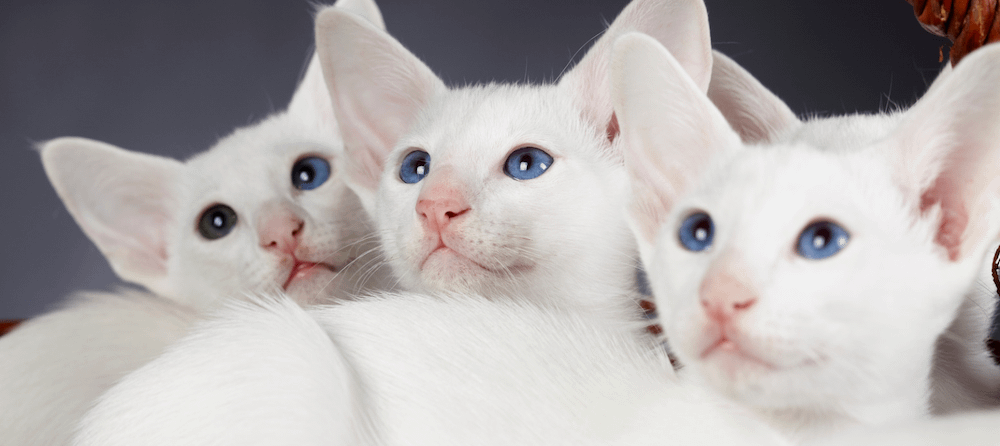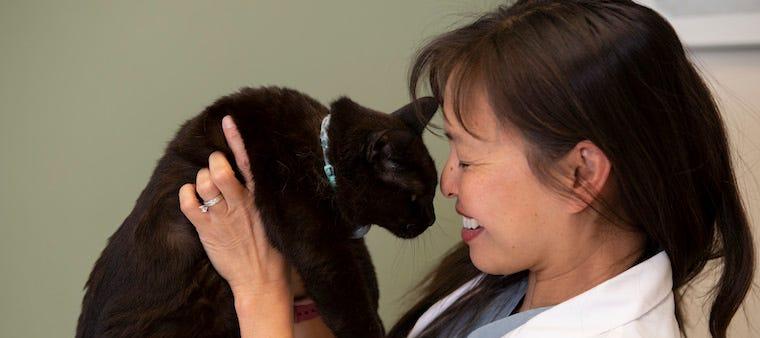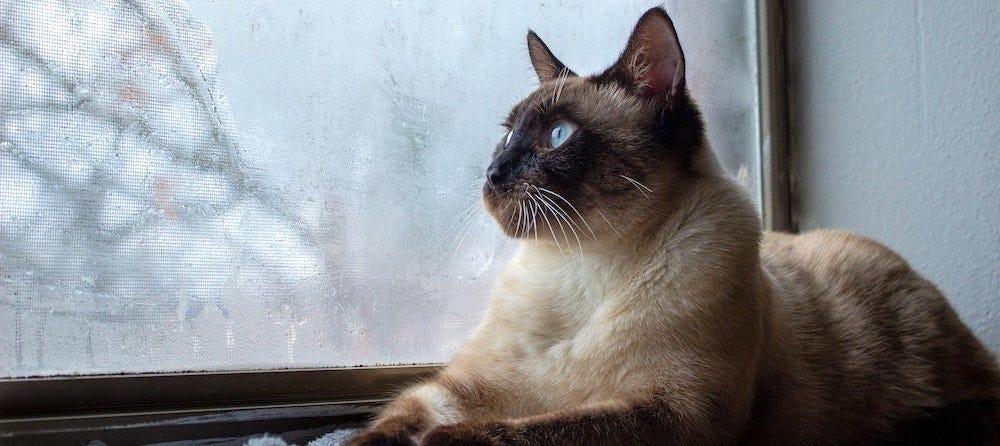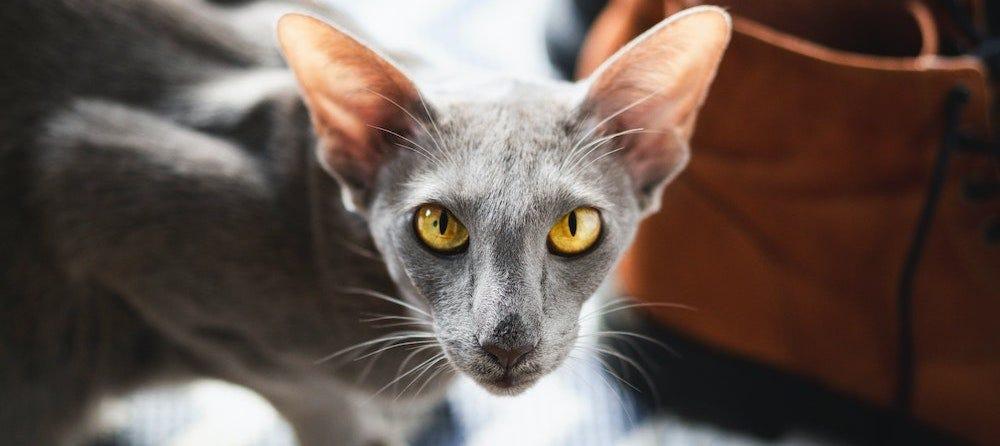While they may look a little standoffish, the Oriental Shorthair is an extremely friendly and inquisitive cat that just wants to show you how loyal they can be. They are a great cat breed that is sociable with other animals as well as with strangers and children.
When you adopt a cat or kitten, you have to be prepared to help keep them healthy and rambunctious for years to come. The lifespan of cats often surprises people. You could adopt an adult cat from a shelter and have more than 10 years left with them. Potentially, you could grow up alongside your kitten from childhood well into adulthood.
It’s a special thing to experience life with your pet. The Oriental Shorthair cat can prove to be your lifelong companion through proper nutrition, regular exercise, and as much love as possible from you. In return, you will find out just how magnificent these fun-loving felines can be.
The lifespan of an Oriental Shorthair cat

When it comes to how long you get to spend with your beloved cat, the goal is to have as many years together as possible. While the Oriental Shorthair cat is known for being generally healthy, you, as their favorite human, are required to set them up for success. You won’t be able to control genetic factors or certain conditions from arising, but you can provide them with an adequate lifestyle to prolong their time with you.
On average, an Oriental Shorthair cat will live between 10 and 15 years, with many surpassing that. Proper nutrition, regular exercising, and yearly trips to the vet can help maximize your Oriental Shorthair's lifespan and give them the best life possible.
If there is something wrong with your Oritental Shorthair, they will likely be vocal about it. (This is a cat that makes their presence and moods known.) Monitoring their health and picking up on abnormalities is the easiest way to keep your Oriental Shorthair healthy.
What is an Oriental Shorthair?

The Oriental Shorthair is a cat that stands out from others with their unique features and intimidating stares. Oriental Shorthairs are long and elegant, with long angular faces, tall ears, and lengthy limbs. They are notably muscular and toned, making them powerful, agile, and strong.
These felines are part of the Siamese breed group—and therefore, are incredibly and adorably vocal. If you are used to peace and quiet, you will quickly have to accept that your Oriental Shorthair is the opposite.
History
The Oriental Shorthair made their appearance after breeders crossed Siamese cats with a variety of other breeds, like the Abyssinian and Russian Blue cat breeds. Breeders began doing this because there was a decline in the Siamese breed, and they wanted to revive the breed after World War II.
The kittens that came from these litters were non-pointed, a prominent feature of the Siamese cat. Those non-pointed cats were bred back to Siamese cats to help save the Siamese breed.
The non-pointed cats that arose when Siamese and other breeds mated became the foundation for the Oriental Shorthair cat.
At first, breeders deemed each individual color and pattern a separate cat breed. But soon, they realized this rainbow of kitty colors were all related. From then on, all non-pointed kittens from these litters would be known as Orientals.
The Oriental started off only as shorthaired cats, but further breeding brought forward a longhaired cat as well. The breed was split into Oriental Shorthair and Oriental Longhair cats. Currently, there are over 300 variations of coloring that an Oriental Shorthair can display, which means you’re unlikely to find two that look exactly alike. That sounds like a game show we would love to watch!
Characteristics
These cats are considered medium-sized, though the length of their limbs, bodies, and tails make them seem much larger. They have elongated faces with wide bright eyes. Their curious faces stand out among other breeds.
Not everyone will know them by name, but they will recognize the ancient cat characteristics in them and know that these cats mean business. As prominent as these cats’ features are, the fact that they come in such a wide range of colors and patterns makes them even more unique. They will surprise you with each litter born!
Personality

The Oriental Shorthair may seem intimidating at first glance, but they are one of the friendliest, most affectionate cat breeds you can find. They are extremely people-oriented and can get lonely easily.
If you want to ensure that your Oriental Shorthair lives a happy life, you will make sure they don’t get lonely—otherwise, they will retreat and become depressed. This is why if you have one Oriental Shorthair, it’s never a bad idea to get another. Having a feline companion makes life a lot easier and happier for this breed, which will make your life easier as well.
The Oriental Shorthair cat is very smart. To keep up with their intelligence, you have to provide enriching activities for them to participate in. You can teach them tricks and encourage them to explore their space, giving them toys and places to perch.
They are particular about where they use the bathroom, so keeping their litter box clean and tidy with the help of a self-cleaning litter box like Litter-Robot ensures that they feel comfortable in their space. You won’t have to worry about your cats revolting against you by going to the bathroom outside of a dirty litter box.
Potential health-related concerns
The Oriental Shorthair typically lives a healthy life but is prone to certain conditions. Oriental Shorthairs can be affected by respiratory issues as well as kidney issues. They are prone to developing amyloidosis, a condition where the abnormal protein amyloid forms deposits in tissues and organs that can lead to organ failure. Kidney disease as a result of amyloidosis is also more commonly seen in Oriental Shorthairs than some other breeds.
Giving your Oriental Shorthair the best life

Your cat can live a long life if their needs are met and you are willing to put in the work to ensure that they are healthy and happy. People who love doting on their feline friends will fall head over paws for this cat breed. They require a lot of attention, similar to that of a dog, and will be negatively impacted if you don’t fulfill their needs.
Ample playtime
Oriental Shorthairs need plenty of playtime. Active play helps them build confidence in their space, burn energy, and maintain their weight. The Oriental Shorthair is typically long and slender, with long thin legs. This means that they aren’t built to hold a lot of weight. They will become fatigued and lazy if they can no longer move around gracefully.
Playtime can ensure that they get energy out and receive some healthy physical activity. Your Oriental Shorthair might even be apt to learn how to walk on a leash, allowing for plenty of exercise and lots of safe exploring. Having cat trees and toys around the house can help keep your Oriental Shorthair occupied when you can’t give them all of your attention.
Proper nutrition
As much as exercise is important, so is diet. You'll want to be feeding your cat nutritious meals in healthy portions. It will be easy to tell if your Oriental Shorthair gains weight because their belly will protrude over their thin legs.
Be aware of how many treats you give them a day, because the calories can add up! (They might try to trick you into rewarding them with treats by using their affection and intelligence.)
Veterinarian check-ups
The most straightforward way to ensure your Oriental Shorthair lives a long and healthy life is to take them to the vet regularly. This will help you monitor any changes in their health or personality and learn ways to improve the quality of their life.
If you ever have any concerns, you should reach out to the vet right away.
Besties with an Oriental Shorthair cat
As much as you want to give these cats a lovely life, they want to give you love in return. By taking good care of your Oriental Shorthair, you will be rewarded with unlimited cuddles, deep "conversations," and a whole lot of laughter.
Sources:
- Shorthair Cat Breeds | Britannica
- Complex Segregation Analysis Of Familial Amyloidosis In Oriental Shorthair Cats | Sciencedirect
- Amyloidosis In Cats | VCA Animal Hospitals
Image credits:
- Manuel Keller via Unsplash








